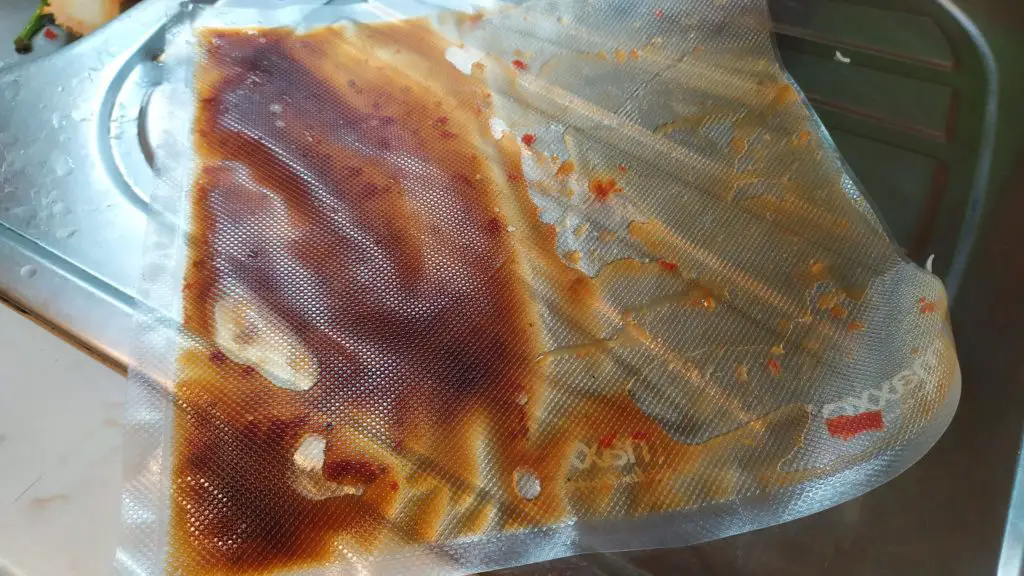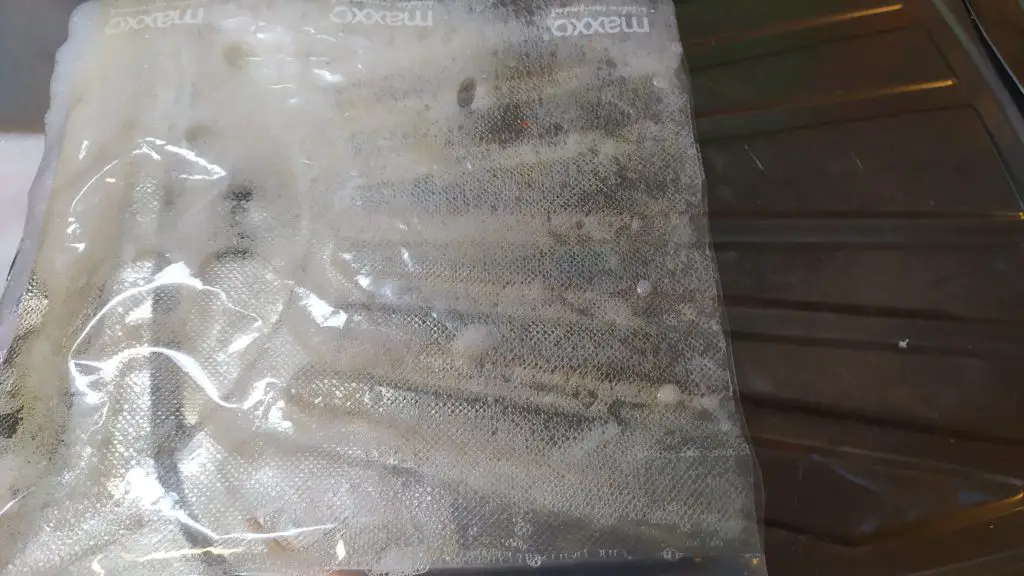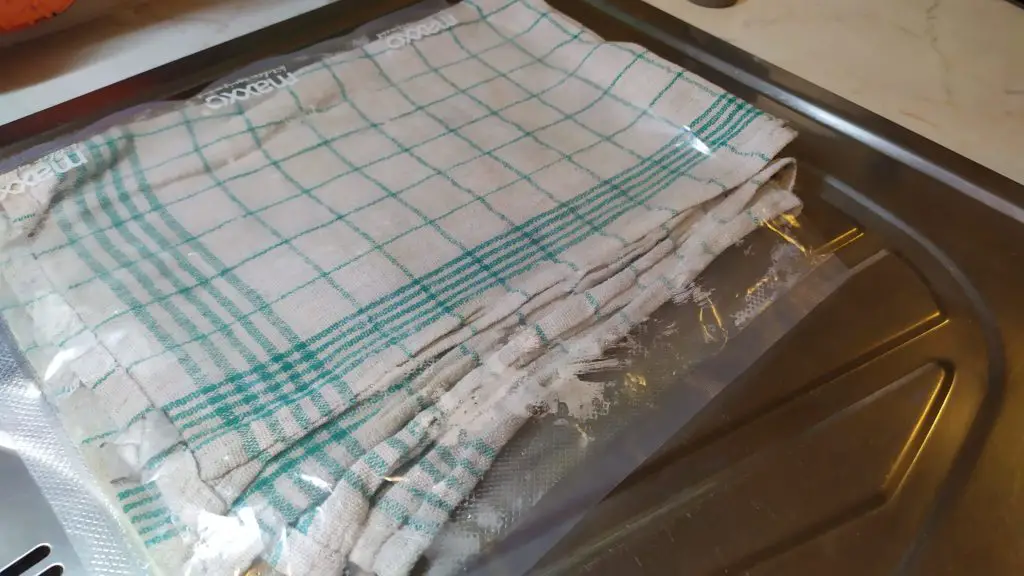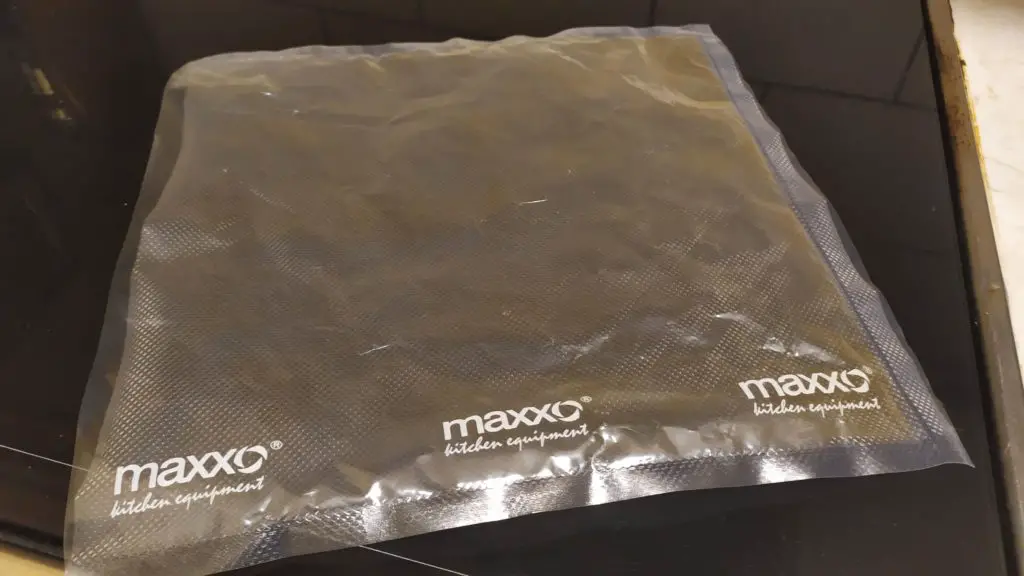Recently I have started to use my sous vide machine more often, and I encountered a small issue. What should I do with used sous vide bags? Can they be recycled? And are there any other ways how to deal with this issue?
The majority of bags used for sous vide can be recycled. To make sure, look for the chasing arrows triangle shape symbol on their pack. Also, another type of recycling is reusing. If you can, consider using your sous vide bags multiple times.
How to recognize that you can recycle the sous vide bag?
In general, it is simple to know what bags can be recycled. You do this by checking the packaging of your bags.
They should have one of the following symbols on their packaging:

If you cannot find a symbol, look for words like PE (short for Polyethylene – group 1, 2, and 4), PA (short for Polyamide – group 7), or nylon. All these materials are recyclable.
If you are interested in more detailed categorization, I do recommend the article here.
Another good way to know that the bag you would like to use in your sous vide is a good fit, focus on buying a product with words like vacuum or sous vide in its name.
Under this category also falls the trendy ziplock-style bags. They are also fine for sous vide cooking, as they can withstand heat in a microwave.
While we are on the topic of materials, try to get bags that are BPA-free. The reason for this is the fact that they are safer for you. Bisphenol A (BPA) is dangerous in terms of our reproduction and behavior. If you heat a bag made with BPA, it may release some of the aforementioned chemicals into your food.
Word of caution: Stay away from BPA plastic as much as you can.
Is there any other way of ‘recycling’ the sous vide bags?
The thing that I have found and which worked great for me was to reuse the bags. Not only that this approach saves your money, but you are also more considerate to nature.
It adds a bit of time to the whole cooking (yes, I am counting cleaning into cooking, as every chef should be cooking with one hand and cleaning with the other). It can be a bit fiddly, but in the long term, it is a great alternative to throwing bags away.
Also, as you are cutting the bags with your knife or scissors, they are getting smaller and smaller. So you are getting rid of some plastic, but it is considerably less than the whole bag. This complication is mitigated in ziplock-style bags. With ziplock-style bags, you have to expect that the lock will get damaged and break eventually.
Neither of these solutions is perfect, but you are still saving a lot of money and not throwing away as much plastic.
Win-win, right?
How to reuse the sous vide bag
For my little guide below, I have made some spicy chicken in my sous vide. I wanted to test the option to reuse the bag on something intensive. Agresive spices like chili and garlic were perfect for this.
The chicken tasted great and messed up the bag as I have expected. The whole cleaning process is not as straightforward as it might seem. Let me give you a step by step directions below.
#1 Cut/open your sous vide bag carefully

When cutting anything, you have to be careful not to hurt yourself. Still, in this situation, you want to be extra careful. You want to save as much of the bag as you can.
So make one straight cut on one side of the bag. My recommendation is to make it below the seal line, as that part was already sealed once. This way, you are creating consistency and seal heating only one side.
Don’t stress too much about the angle or precision. You can fix that later. It can be hard to do, as you are cutting into the sous vide bag with a liquid in it. It is easy to slip and make a small mistake. It is completely fine.
If you are using a ziplock-style bag, slide the lock slowly and carefully to the end so it is fully opened.
Gently take out the cooked ingredients from the bag, and if necessary, pour the juices into a cup.
#2 Enjoy your meal
I am not a tyrant. Sit, eat, and enjoy your food first. The whole purpose of sous vide cooking is to feast on your creation.
You can get back to the cleaning later.
#3 Wash your sous vide bag

For this step, you will need not only hot water but also some soap.
Pour water with the soap inside the bag and clean it thoroughly. You have to do this couple of times over, as the spices tend to stick to the bag.
If you wash the bag just once, it will keep a weird smell. A combination of garlic and soap is quite a strange one, believe me.
Another thing that will help you to clean the bag is turning it inside out. In my case with the spicy chicken, it was necessary as some bits of chili didn’t want to leave the bag with water.
What also helps greatly is using the sponge with soap. You know, to make the cleaning quicker and remove the oil layer.
Rinse the bag at the end.
#4 Dry clean your sous vide bag

Use your kitchen or paper towel.
What works best is to fold it into the shape of your opened and cleaned sous vide bag and putting it in.
This way, you should be able to fill in all crevices and dry out every part of the bag.
#5 Air out your sous vide bag

Now, this part might not be as obvious.
What you have now is a cleaned and dried sous vide bag. But it smells weird. A most likely light combination of soap and spices.
As you don’t want to taste in your next meal, you have to get rid of it.
But how?
What works the best for me is to pin the sous vide bag by one side (it doesn’t matter which one, as long as it stays open) to the curtain.
I am a rebel, I know.
My wife is not super happy about it, as I tend to forget the bags on curtains, and it creates these little awkward moments when someone comes to visit and sees a bunch of ‘flying’ sous vide bags. On the other hand, it is a great conversation starter 😀
#6 Trim your sous vide bags

After a day or so, your bags should be dry and smell-free.
The thing I always do is to check if I have had made the initial cutting correctly. More than not, I cut the bag at a weird angle, and I have to fix my work.
Working with the sous vide bag should be easier now, as it is dry, sides are not sticking together, and it holds its original shape.
#7 Don’t fold your sous vide bags
I know that we are here in a ‘saving’ mode, but I would advise against folding the bags. I am aware that they came in a big role, but you have used them at least once already. Any additional folding will cause bonus damage in the long term.
Reusing and refolding the sous vide bags will make lines in places where you fold your sous vide bags that will help in the deterioration of the whole bag. Over time they will be deeper and deeper and one day they will tear in the fold line.
#8 Stock your sous vide bags
One over the other.
Yes, the best way of storing your sous vide bags is to have them laid out one over the other on a neat pile.
If you want to upgrade the storage to another level, take your least favorite cookbook and put it over your pile. It will put slight pressure on the stack of sous vide bags, keep them from bending and mark the spot where you have them stored. If they are small enough or the book is big enough, you can put them inside to achieve the same result.
#9 Count the money you have saved by reusing
This part is tied to the guide indirectly, but it is still important.
I can say that most sous vide bags can be reused at least 10 times from my experience. After this, they are too small for me to be able to reseal them properly.
But even this number is great. For example, you buy a pack of sous vide bags for 12$, use all of them 10 times, and you will save 108$! (9×12$ – I am not counting in the pack that you bought originally for 12$, but only the additional ones you would have bought).
That’s a nice big pile of money that you can use on whatever else.
On top of that, you are throwing away much less plastic than you would with the whole bag.
That’s a great deal for you and the planet.
Final word
So there are two ways on how to recycle the sous vide bags. You can throw them away or reuse them, which is even better.
Do you know any other way how to recycle sous vide bags? Do let me know in the comments below.
Until next time, happy sous vide bags recycling.




















